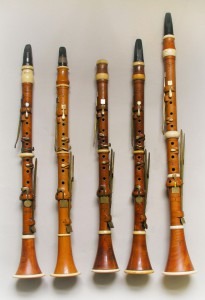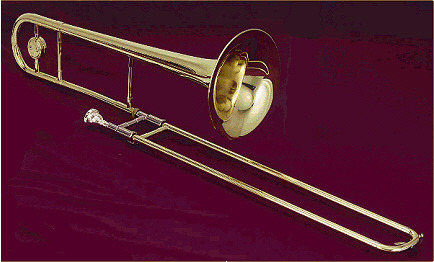
Clarinet of Mozart’s day
The sound, as a consequence, is a warm woody sound. The clarinet came to the orchestra in the Classical period with two significant works by Mozart marking its appearance: the Clarinet Quintet. K 581 (1789) and the Clarinet Concerto, K. 622 (1791). In the Quintet, the clarinet is placed in opposition to a string quartet and it is the contrast between the string sound of the quartet and the melodic stylings of the clarinet that brings our attention to this ‘new’ sound. Both works were written for Viennese clarinetist Anton Stadler.
It’s a ‘new’ sound because the clarinet, over time, had been changing and evolving to turn from an instrument with a loud shrill sound (the ‘clarineto’ name means little trumpet), to an instrument with more keys and adjustments to improve the tuning, make the fingering easier, and increase the range.
Mozart: Clarinet Concerto in A Major, K. 622:
Martin Fröst
Mozart: Clarinet Quintet in A Major, K. 581
Sabine Meyer
These beautiful golden clarinets are made of boxwood with ivory fittings, and have 5 keys. When we compare these 18th century models with a 21st century clarinet, we see many changes: every hole on the instrument is managed by a key (either open topped or closed), there are many more keys operated by levers (which make the fingering easier), and, in general, it’s a much more complex instrument. The typical color of a modern clarinet is black and professional instruments are made from black African hardwoods such as mpingo. Inexpensive clarinets can be made from less expensive materials such as plastic resin, metal, or hard rubber (ebonite). One modern maker makes his clarinets from a composite of a hardwood and carbon fibre.
Modern Bb clarinet
Karl Leister
In this list of clarinet virtuosos from the 18th century to today, the composers that the 4 early virtuosos worked with are noted.
Anton Stadler (1753 – 1812) Mozart
Johann Simon Hermstedt (1778-1846) Louis Spohr
Heinrich Baermann (1784 – 1847) Carl Maria von Weber
Richard Mühlfeld (1856 – 1907) Johannes Brahms
Stanley Drucker (B. 1929- )
Karl Leister (b. 1937 – )
Richard Stoltzman (b. 1942- )
Sabine Meyer (b. 1959-)
Martin Fröst (b. 1970- )
Sharon Kam (b. 1971- )
Julian Bliss (b. 1989- )
Andreas Ottensamer (b.1989-)
Schumann ‘Three Romances’
Andreas Ottensamer
Some clarinet sonatas and concertos:
Weber: Clarinet Concerto No. 2 in E-Flat Major, Op. 74, J. 155: II. Romanza: Andante
Sabine Meyer, clarinet; Dresden Staatskapelle; Hans Vonk, Conductor
Copland: Clarinet Concerto: I. Rather fast
Kim Ellis, clarinet; Slovak National Symphony Orchestra; Kirk Trevor, Conductor
Debussy: Premiere Rhapsodie
Julian Bliss, clarinet; Bradley Moore, piano
Finzi: Clarinet Concerto in C Minor, Op. 31: III. Rondo: Allegro giocoso
Dimitri Ashkenazy, clarinet; Luzerner Symphony Orchestra; Jonathan Nott, Conductor
Hindemith: Clarinet Sonata: IV. Kleines rondo, gemachlich
Michele Carulli, clarinet; Massimiliano Damerini, piano
Poulenc: Clarinet Sonata, FP 184: I. Allegro tristemente: Allegretto – Tres calme – Tempo allegretto
Chika Kishihara, clarinet; Kayoko Takae, piano
Corigliano: Clarinet Concerto: I. Cadenzas
Richard Stoltzman, clarinet; London Symphony Orchestra; Lawrence Leighton Smith, Conductor








As someone who used to play the clarinet, I am now putting more research into the instrument and I find it very interesting.